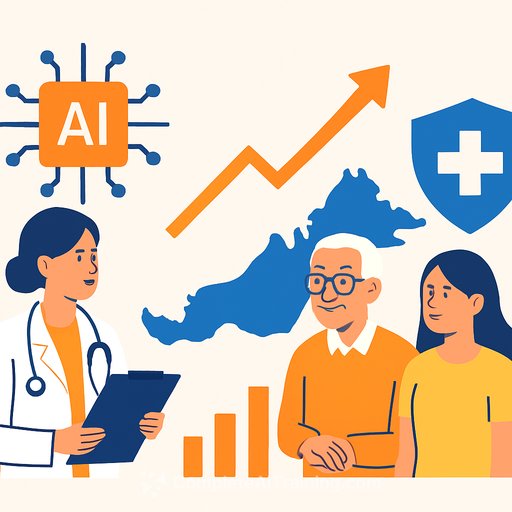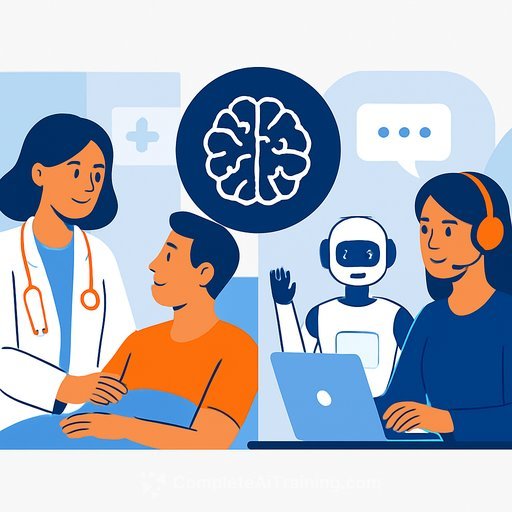How women physicians can guide the future of health care AI
"No, it's not too late." That's the message cardiologist and clinical informaticist Ashley Beecy, MD, shares with women physicians who want to get involved with AI.
Dr. Beecy leads AI strategy as chief AI officer at Sutter Health in Northern California. Her advice is simple: start where you are, add value inside your current workflow, and let the results speak.
From code to clinic-and back again
Dr. Beecy didn't begin in medicine. She studied premed, then spent about a decade in computer engineering roles at IBM and Citibank, building software and managing products. She returned to medicine to apply technology in ways that improve care and the patient journey.
Now at Sutter Health, she helps ensure safe, thoughtful AI through strong governance. Sutter Health is part of the AMA Health System Program, aligning system-level resources with physician needs.
Why physicians are essential to AI that actually works
Good AI work mirrors good clinical practice: form a hypothesis, test, evaluate, then monitor over time. That mindset translates directly to models, workflows, and outcomes.
Clinicians bring something irreplaceable: real patient encounters. If you've sat with patients, you can anticipate how an ambient scribe may affect rapport, how a triage model fits the visit, and whether the tool helps or distracts. Most of us care about one thing-does this improve outcomes like admissions, mortality, or time to diagnosis?
What the AMA's Center for Digital Health and AI means for you
The AMA's new center is focused on practical levers that matter to clinicians and patients. Four areas stand out:
- Policy and regulation: Clear rules for safe, effective AI.
- Clinical workflow integration: Tools that fit the visit, rather than fight it.
- Education and training: Skills and guidance for clinic and system leaders.
- Collaboration: Tech, research, government, and health care working toward patient needs.
Quick ways to get involved-starting this week
- Learn the basics: Use accessible resources like the AMA ChangeMedEd AI series to level up without going back to school.
- Read the evidence: Follow trials that measure safety, efficacy, workflow impact, and equity. Get comfortable asking, "What outcome moved?"
- Be an impact player internally: Don't wait for a title. Volunteer for the pilot. Lead the workgroup. Finish the project and share outcomes.
- Join governance: Safety, ethics, and bias reviews need clinical voices-yours.
- Run focused pilots: Start with a narrow use case (e.g., ambient scribe in one clinic). Define metrics up front: time saved, note quality, patient sentiment, and clinician burnout signals.
- Track policy signals: Stay current with guidance from the FDA on AI in medical software AI/ML in SaMD and with the NIST AI Risk Management Framework NIST AI RMF.
A practical checklist for your next AI project
- Define outcomes: What clinical or operational metric will improve? By how much? In what time frame?
- Get a baseline: Measure current performance before you turn anything on.
- Map stakeholders: Clinicians, nurses, IT, compliance, patients. Who uses it? Who maintains it?
- Clarify risks: Failure modes, bias, drift, and privacy. What's the rollback plan?
- Fit the workflow: Minimize extra clicks. Keep the exam room human.
- Train and support: Short, repeatable training. Easy support channel. Clear FAQs.
- Monitor continuously: Quality, safety, and equity metrics on a dashboard. Review monthly.
- Close the loop: Collect feedback, iterate, and publish what you learn.
Leadership without the title
Dr. Beecy's advice is blunt: lead before you're labeled a leader. Pick a problem, deliver a small win, and stack those wins. That's how reputations-and opportunities-grow.
Community and recognition
The AMA Women Physicians Section celebrates Women in Medicine Month each September and honors physicians who advance women's careers through the Inspiration Award. With more than 100,000 members, the section focuses on increasing leadership roles and moving women's health forward.
Keep learning
If you want structured learning that maps to clinical roles, explore curated AI training by job function here: Complete AI Training - Courses by Job. Pick one skill, apply it in your clinic, then build from there.
Start small. Measure what matters. Share results. That's how women physicians can influence where health care AI goes next-and make sure it works for patients and clinicians alike.
Your membership also unlocks:






